Abstract
Three psychological scaling procedures—category rating, magnitude estimation, and equivalence—were used to measure the levels of well-being that student and health-leader judges in 14 experimental groups associate with 50 case descriptions of function status representing the continuum from complete well-being to death. No significant differences were detected for order of method presentation, interview situation, scaling method, student vs. leader judges, or most interactions among these factors. Category rating, the simplest and apparently the most reliable of the methods, was consistent with the results of the social choices implied in the equivalence technique. The results indicate the feasibility of measuring the social values of large numbers of cases in household interview surveys.
Full text
PDF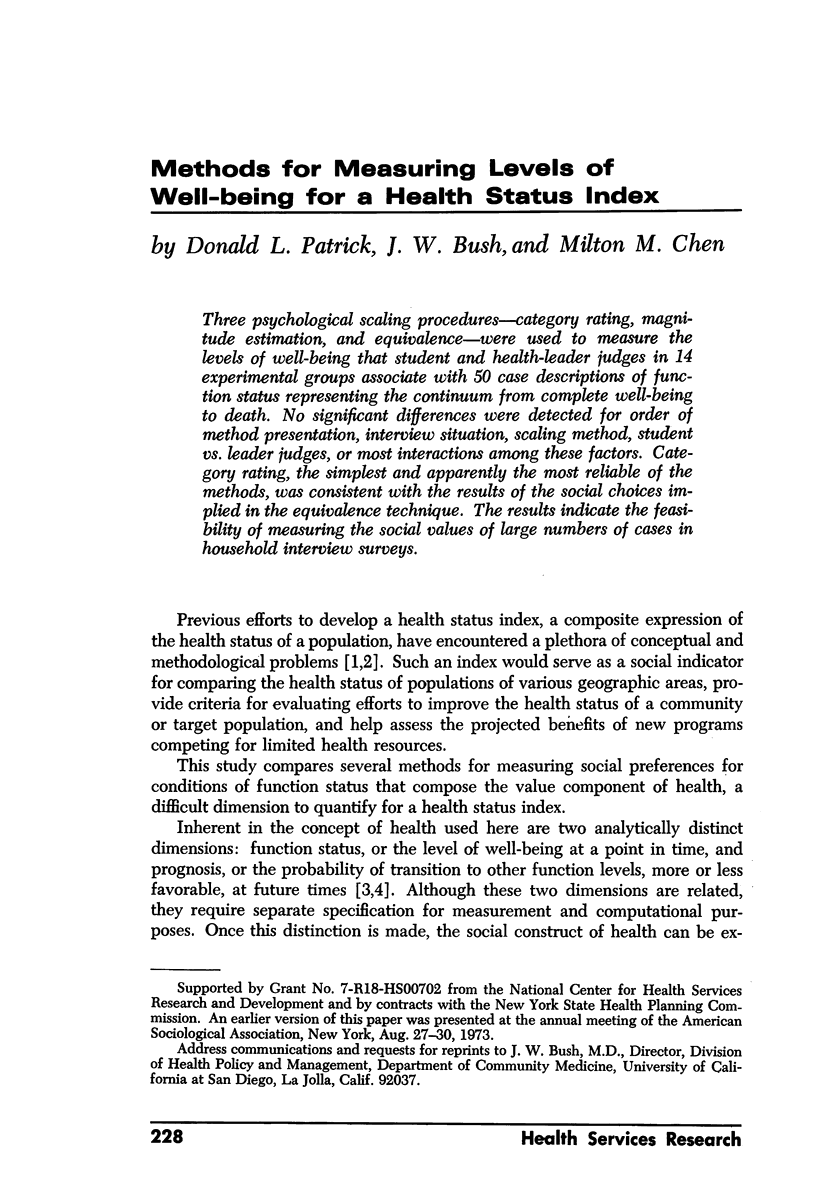
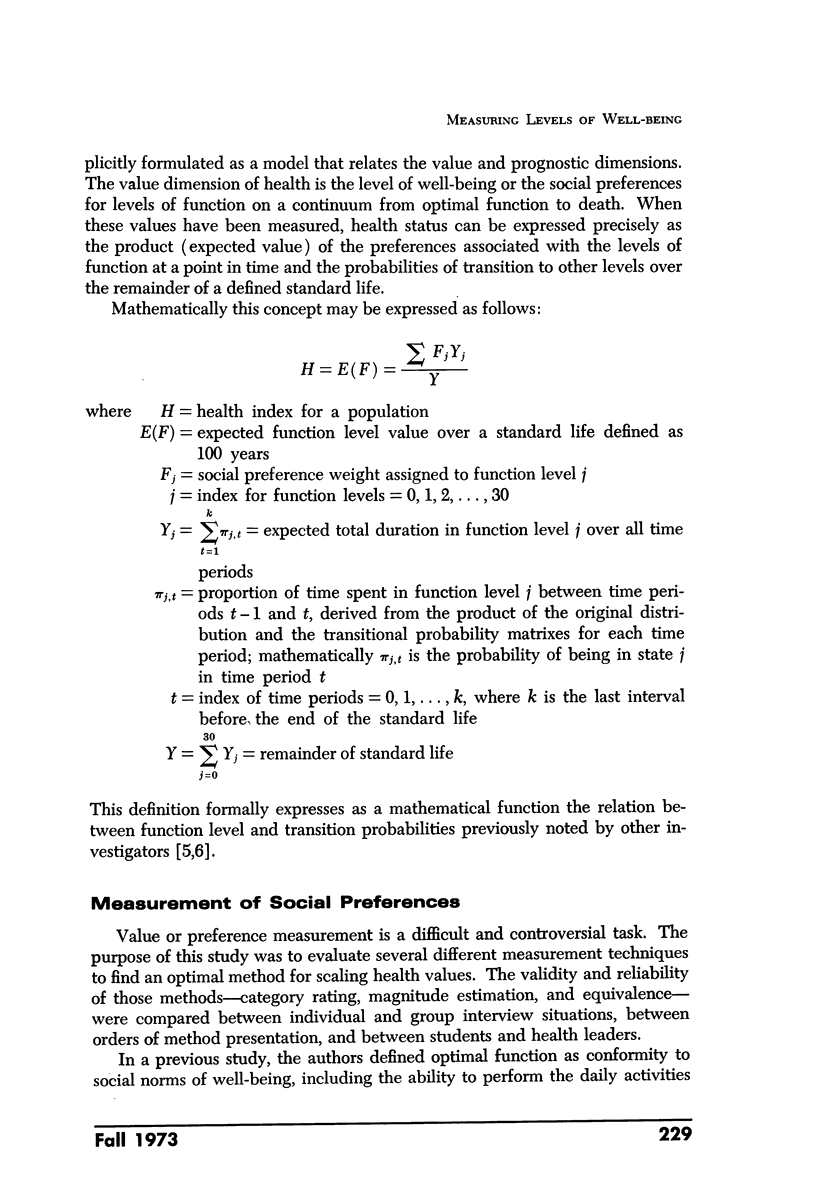
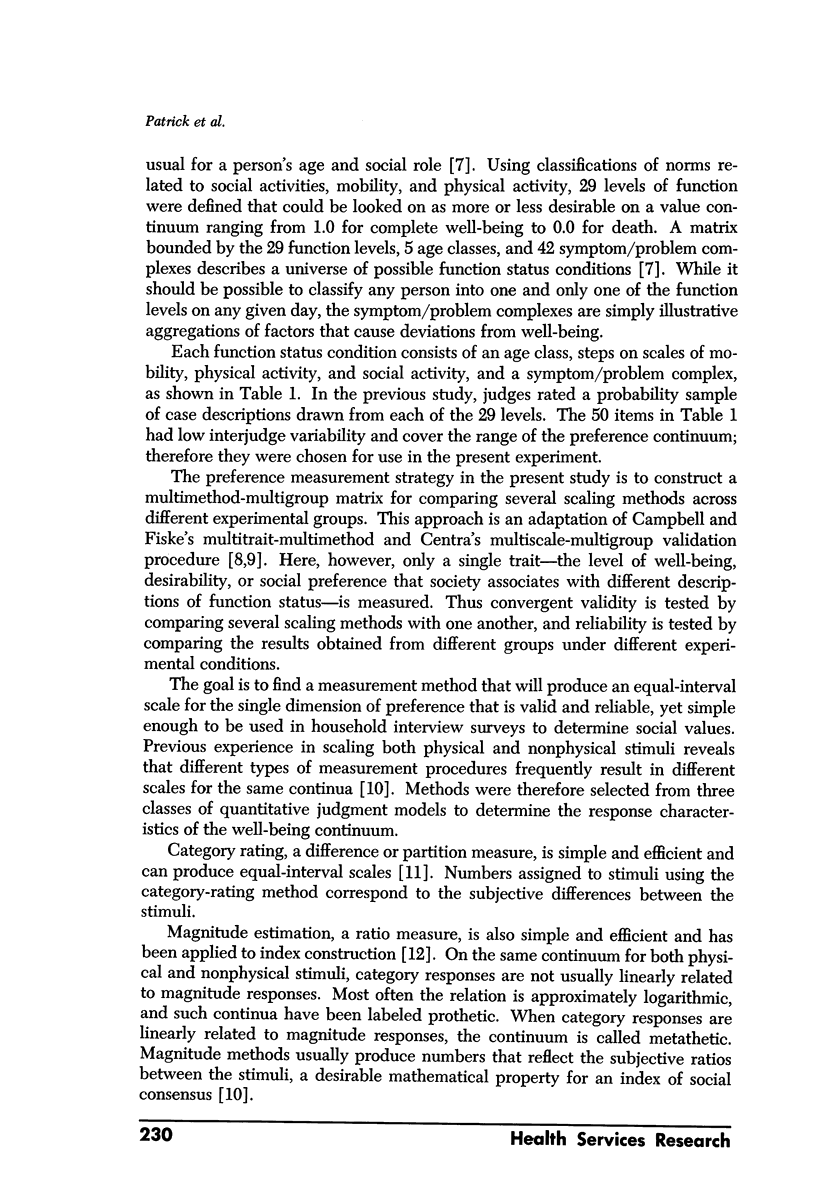
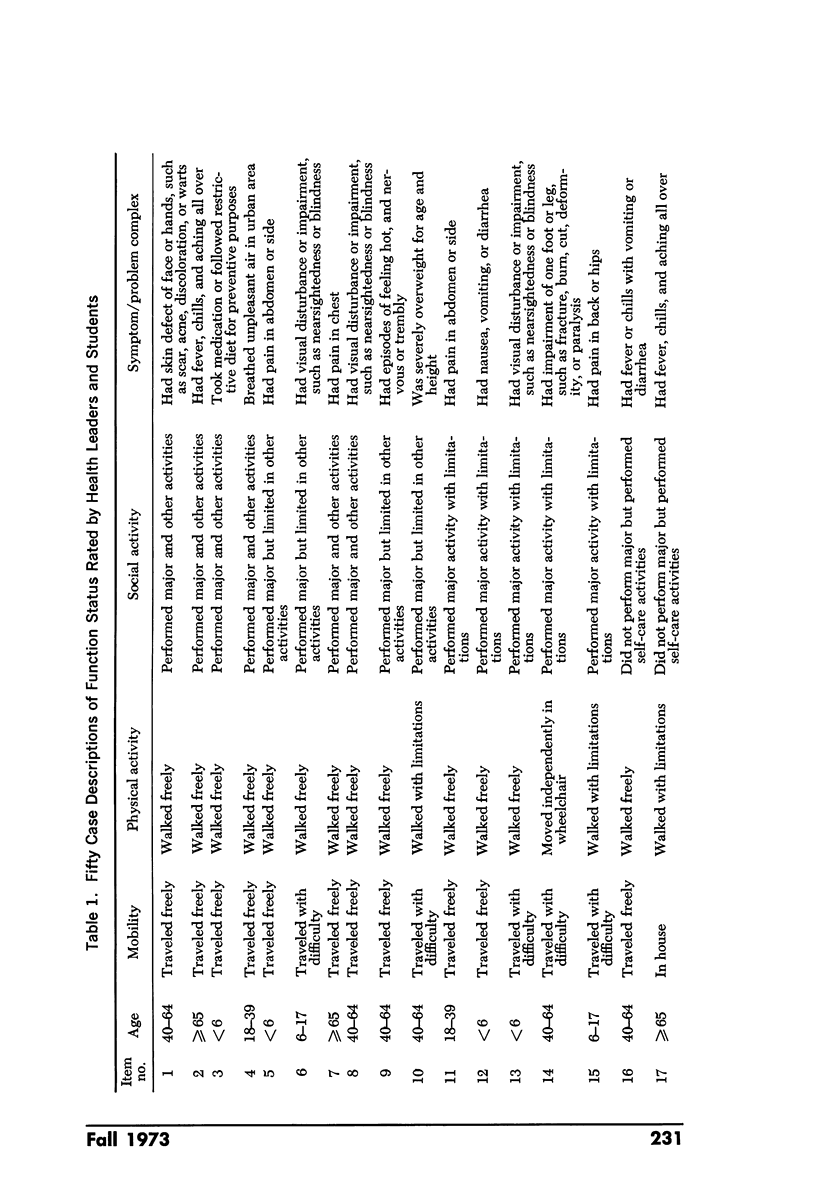
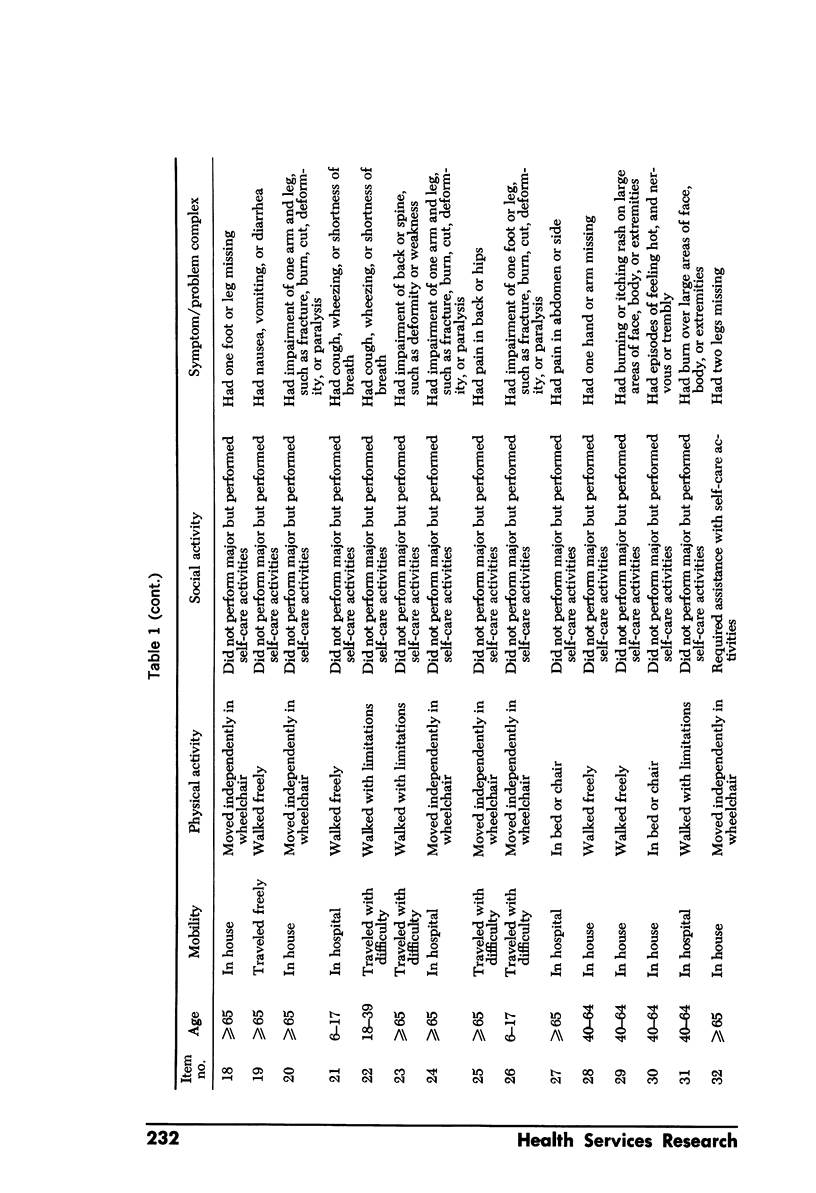
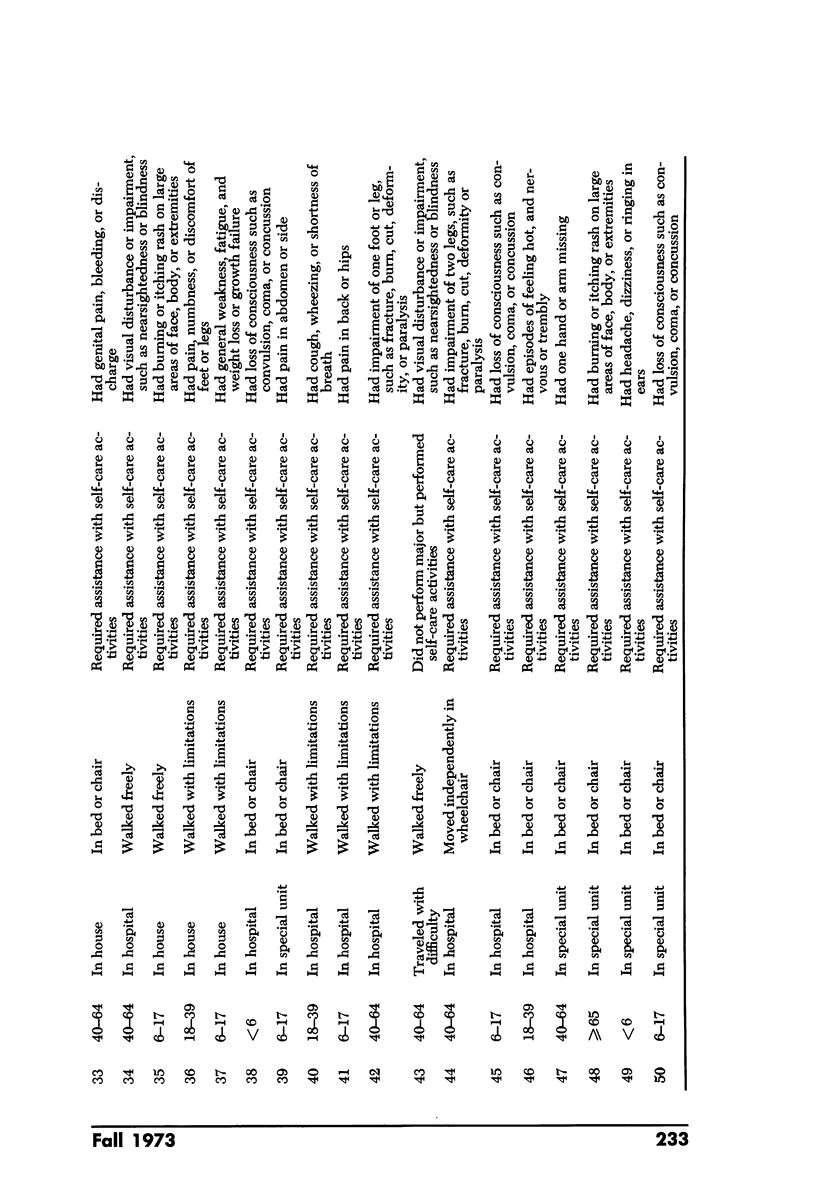
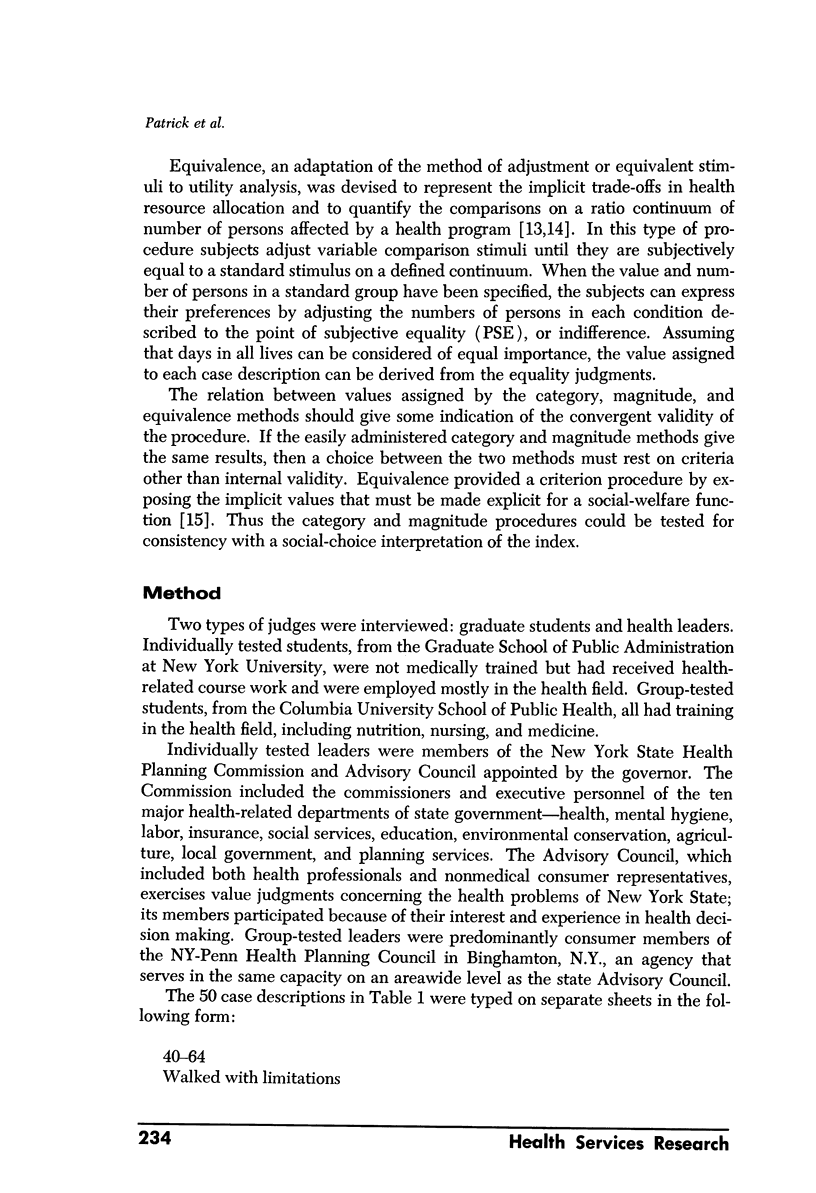
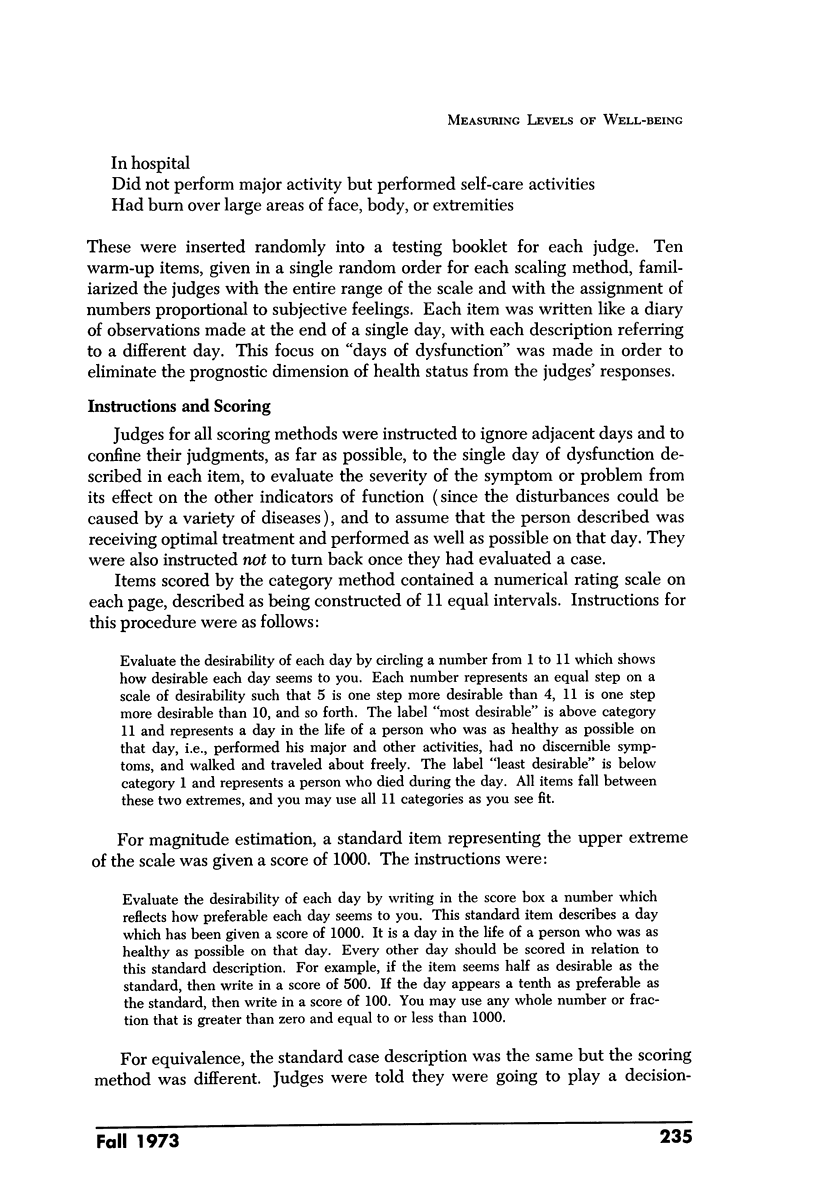
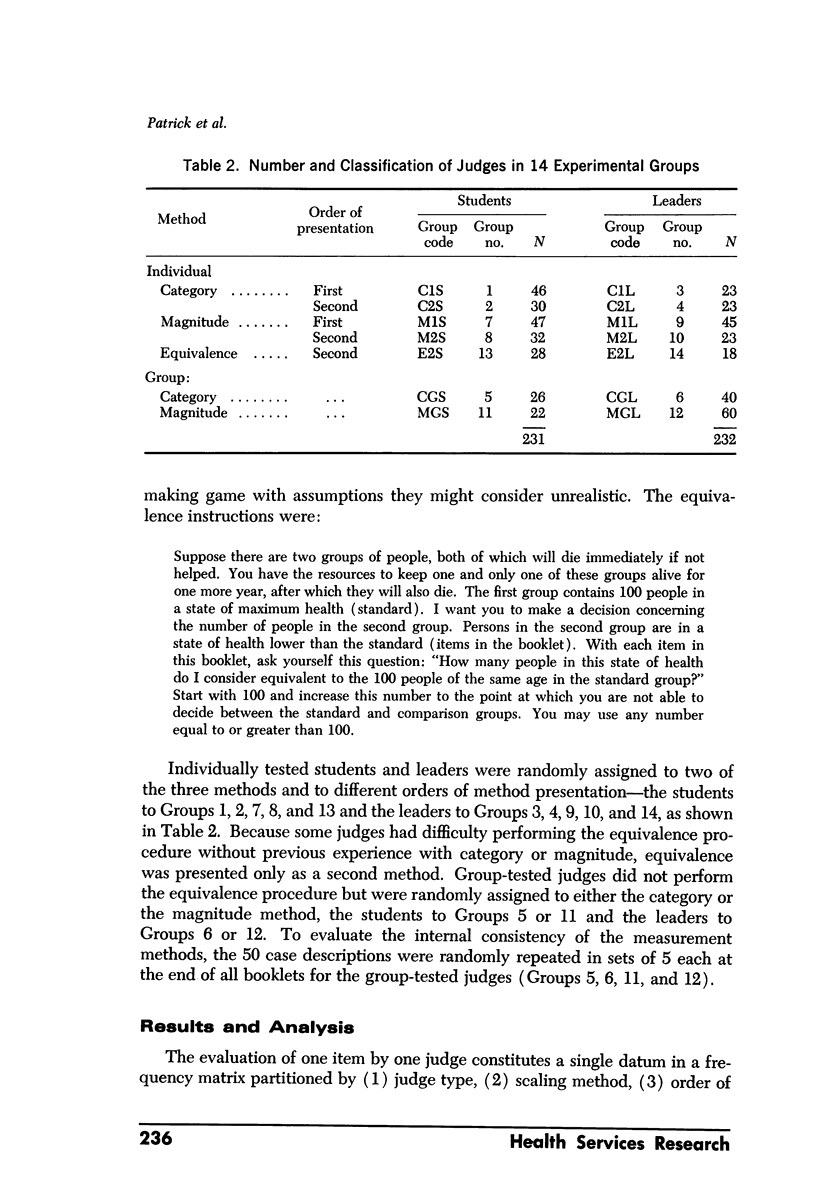
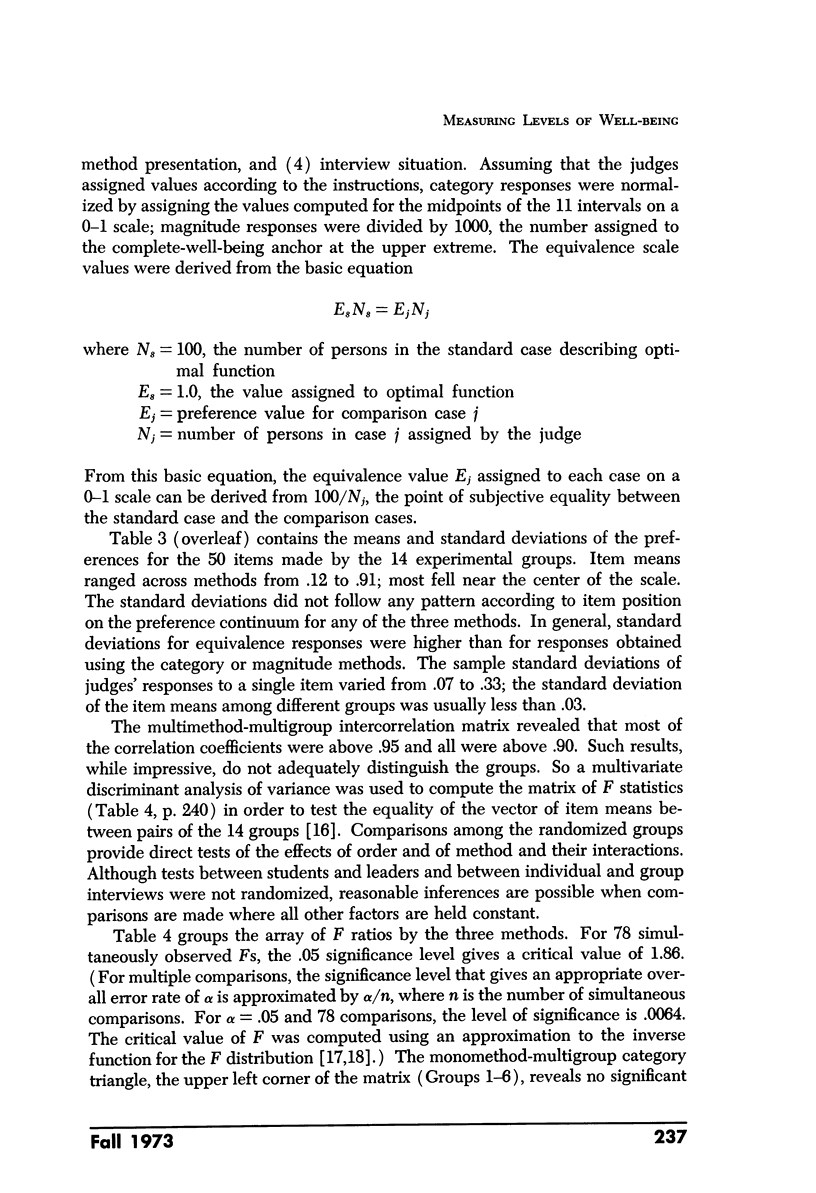
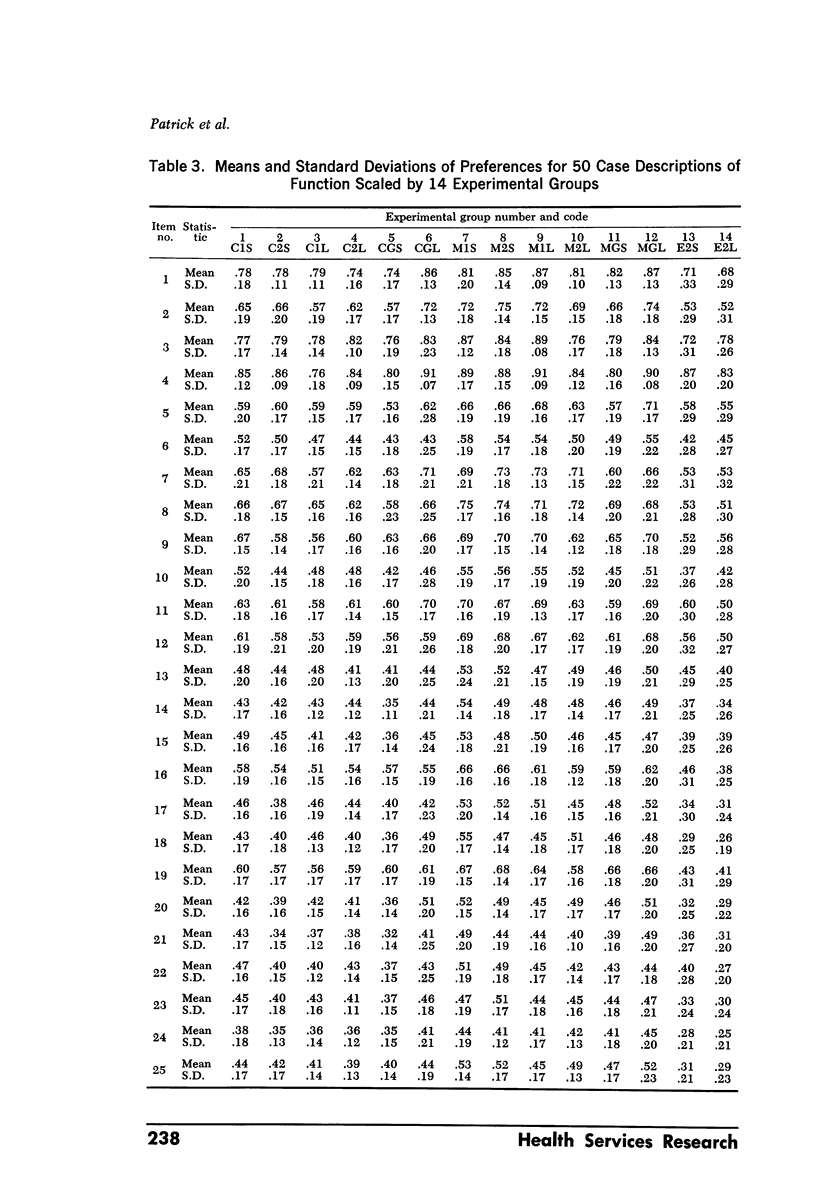
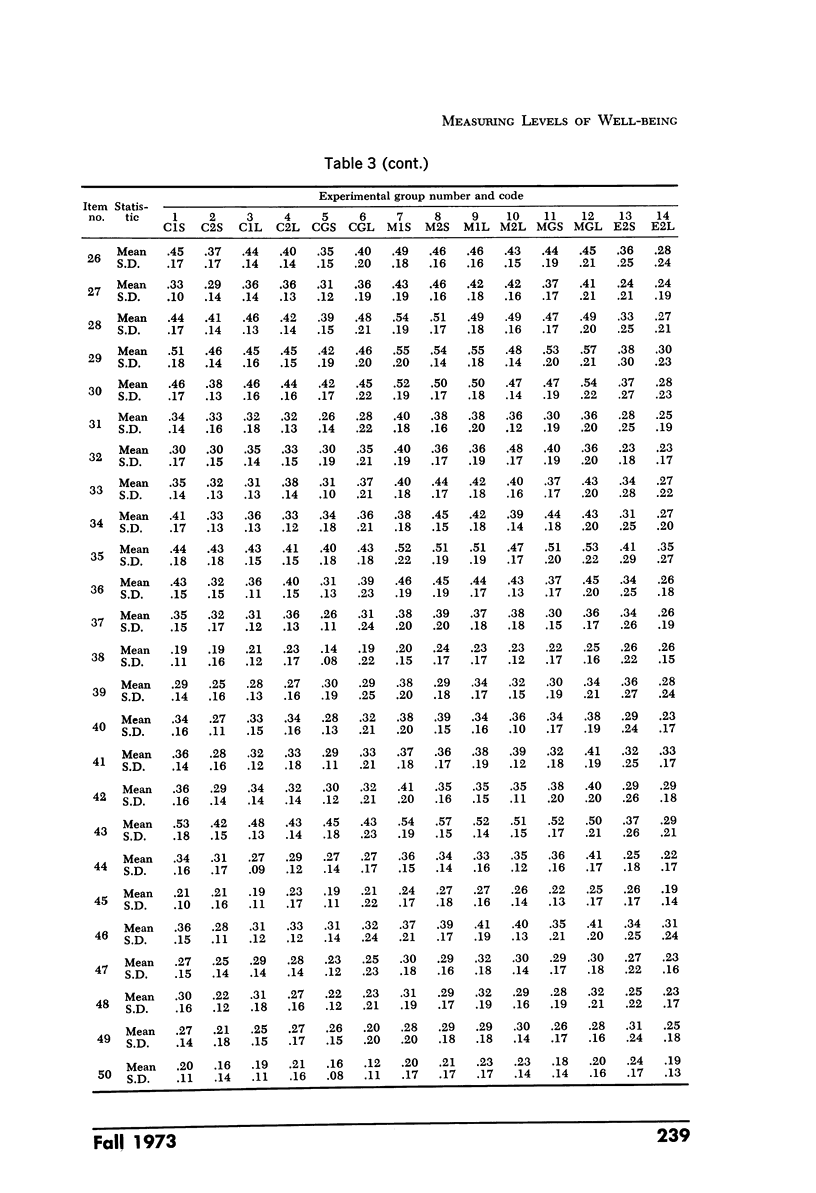
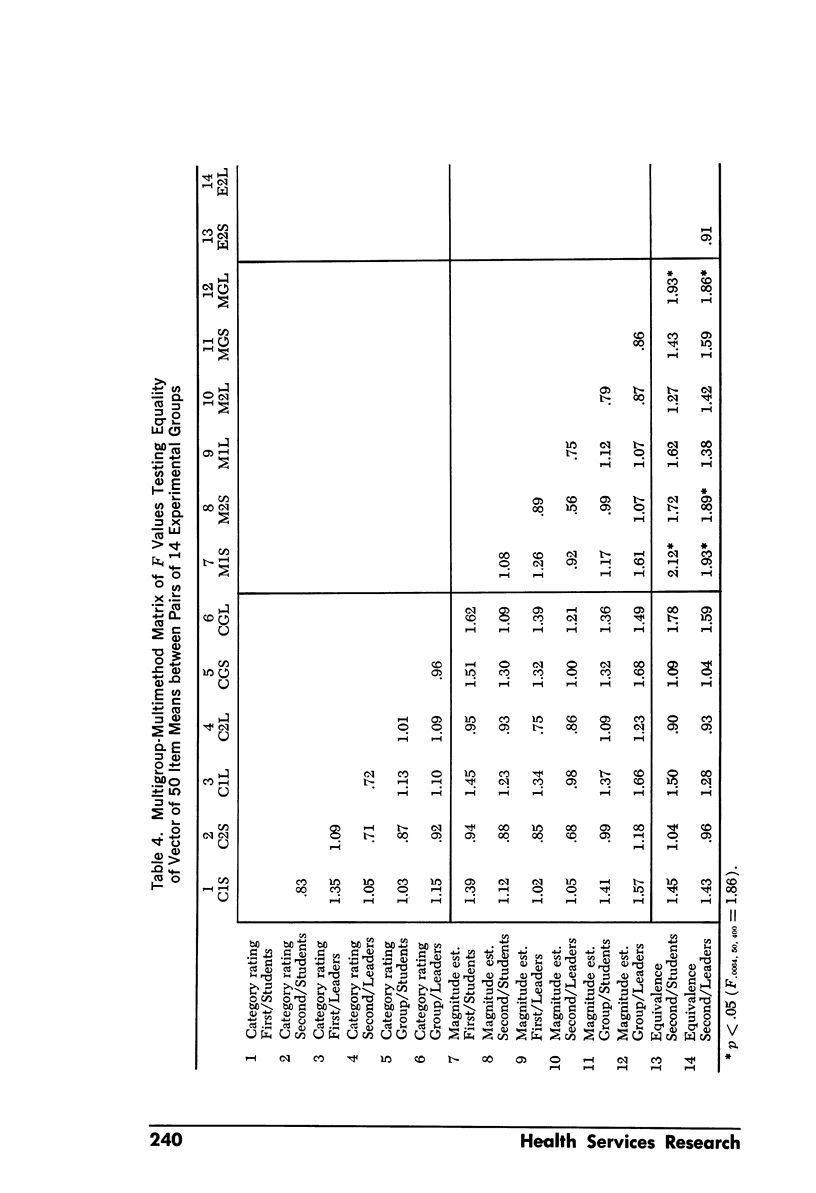
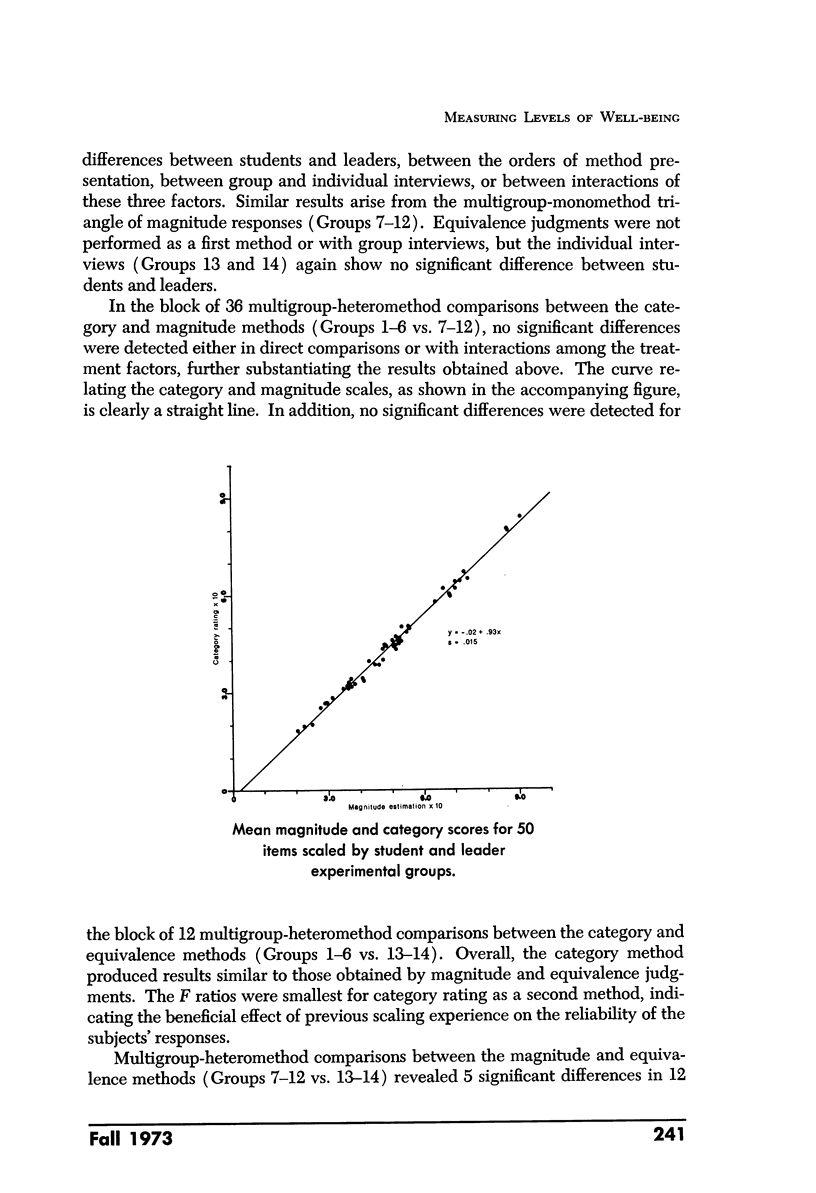
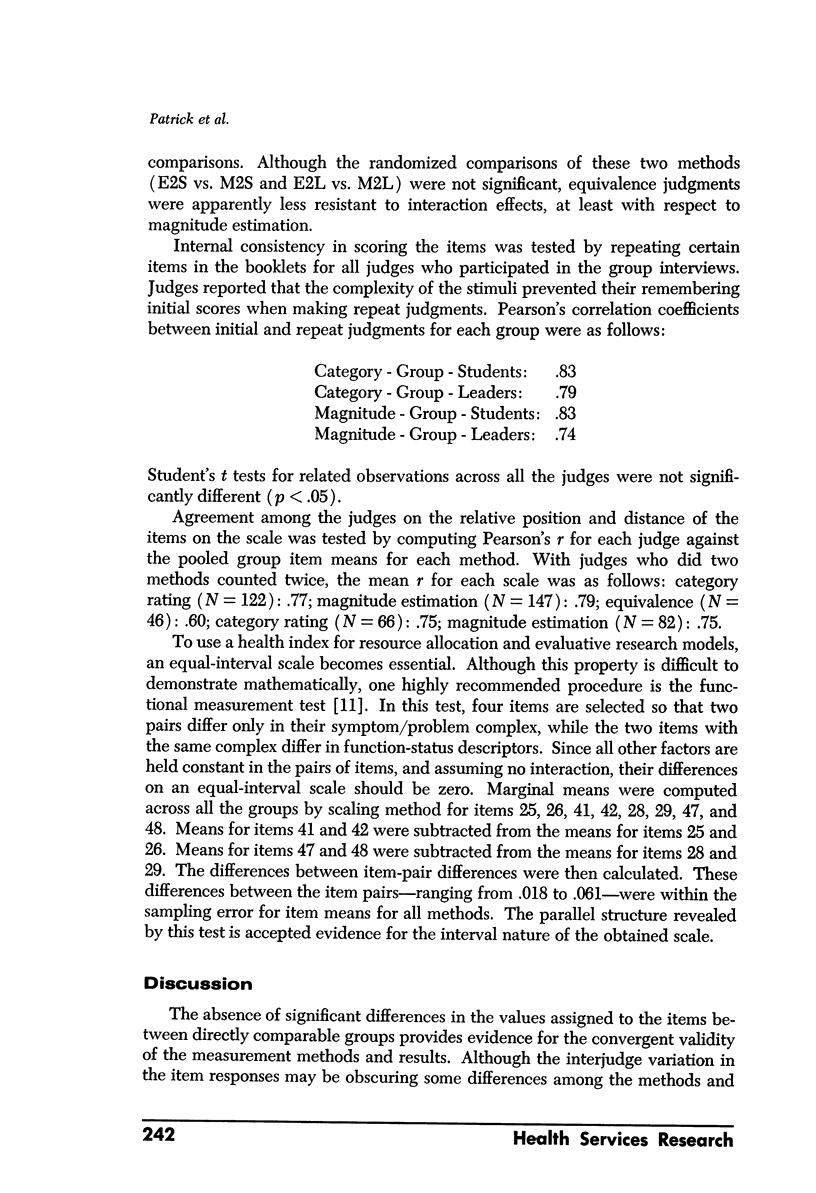
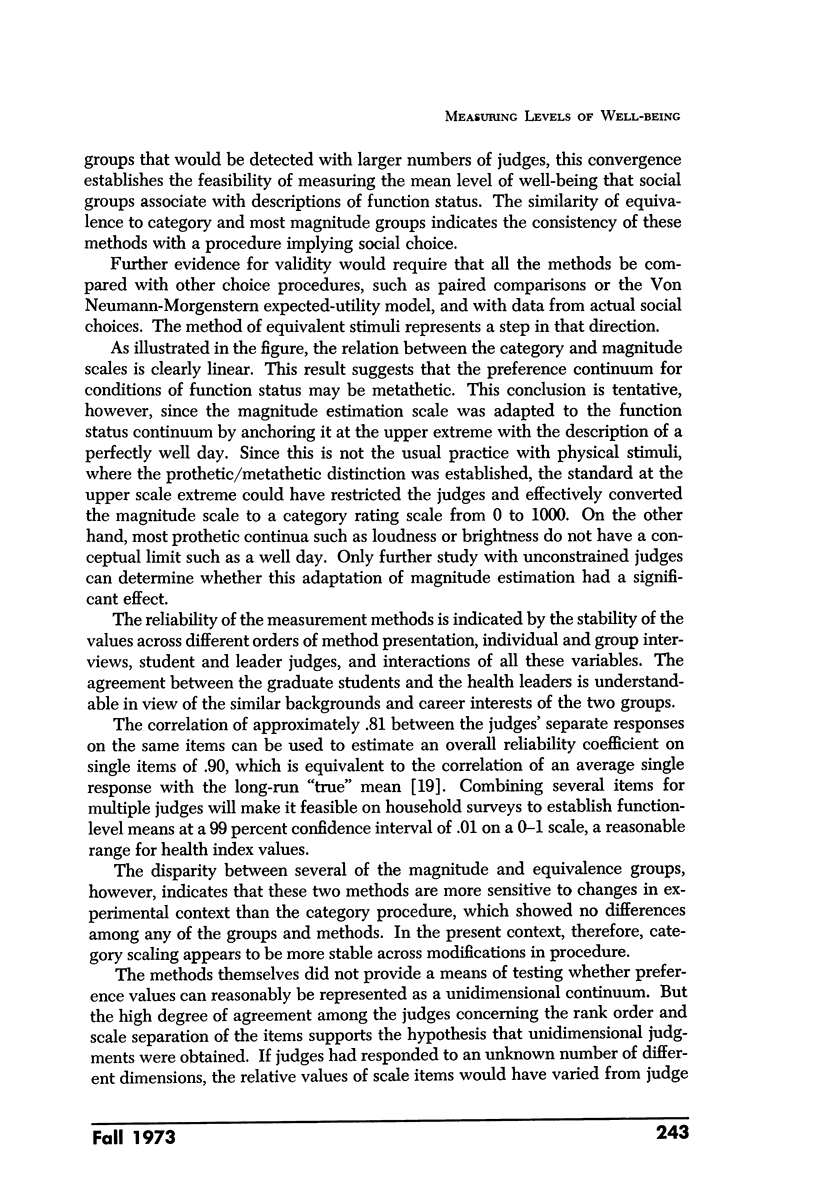
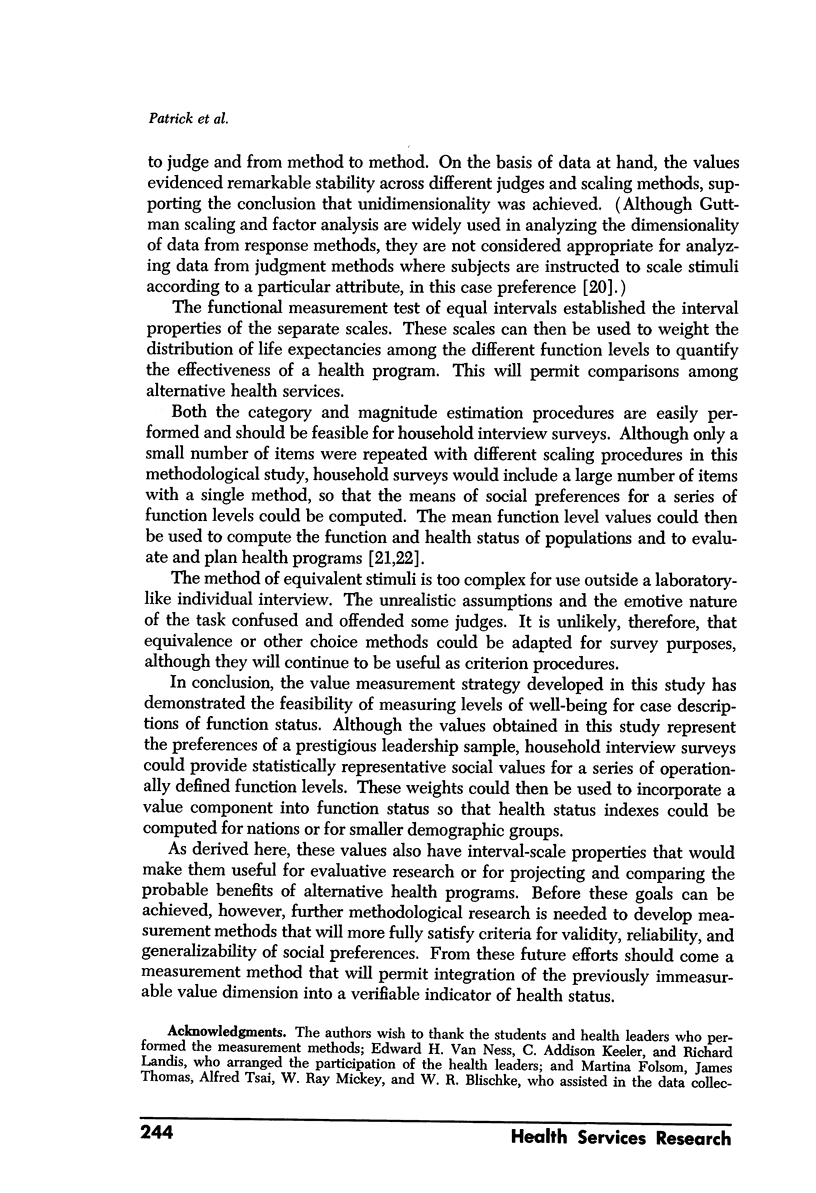
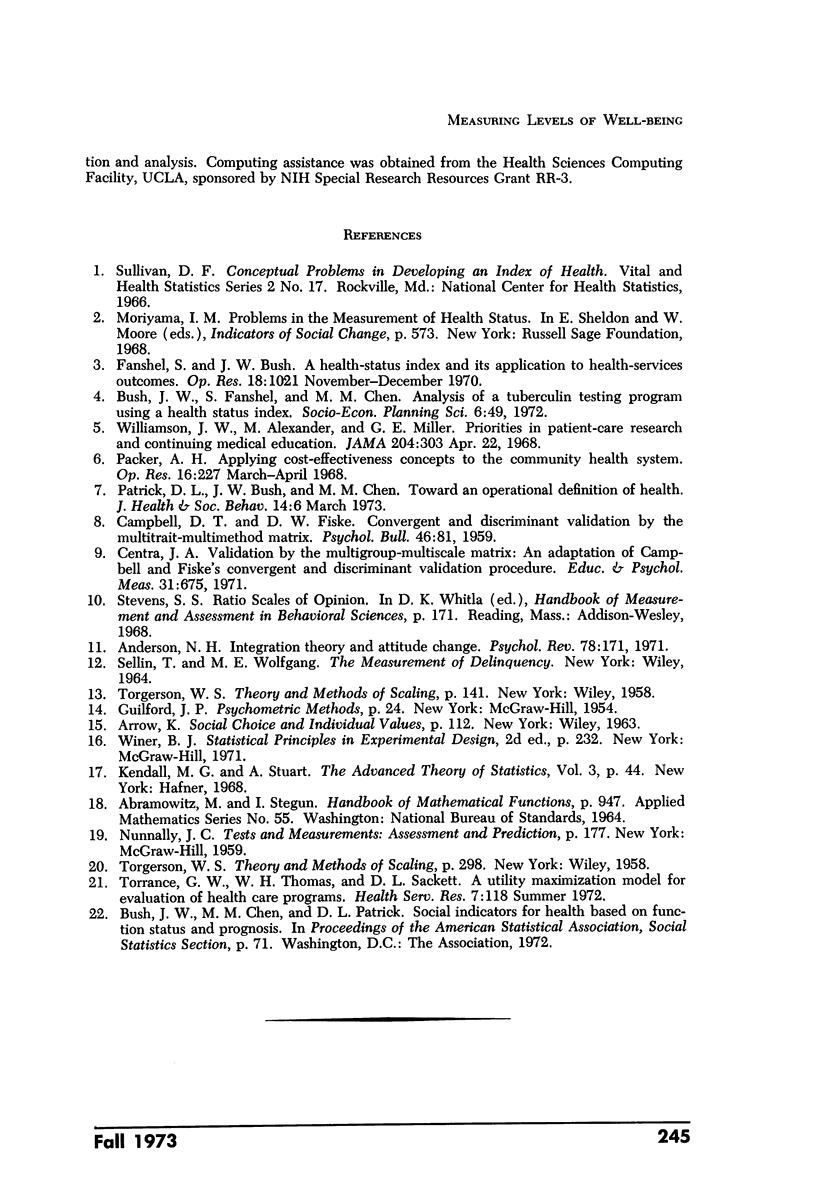
Selected References
These references are in PubMed. This may not be the complete list of references from this article.
- CAMPBELL D. T., FISKE D. W. Convergent and discriminant validation by the multitrait-multimethod matrix. Psychol Bull. 1959 Mar;56(2):81–105. [PubMed] [Google Scholar]
- Patrick D. L., Bush J. W., Chen M. M. Toward an operational definition of health. J Health Soc Behav. 1973 Mar;14(1):6–23. [PubMed] [Google Scholar]
- Torrance G. W., Thomas W. H., Sackett D. L. A utility maximization model for evaluation of health care programs. Health Serv Res. 1972 Summer;7(2):118–133. [PMC free article] [PubMed] [Google Scholar]
- Williamson J. W., Alexander M., Miller G. E. Priorities in patient-care research and continuing medical education. JAMA. 1968 Apr 22;204(4):303–308. [PubMed] [Google Scholar]


